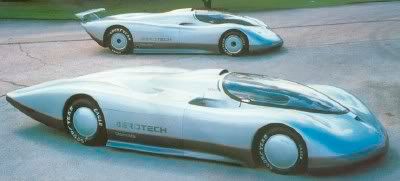Quote:
|
In the 1980s, a few prototypes were created that were used to sound out the limits. For example, the GM Aero had a drag coefficient of 0.14. It had completely smooth wheels and a completely smooth underbody. The angle of the windscreens meant that it heated up to very high temperatures in the sun and it had no brake cooling, no cooling air system and no seams on the bodywork. If you were to use this shape, which would not fit into a standard garage, to create a production car, you would have to add at least 30 or 40 points, which would bring the drag coefficient up to 0.18. If you then shortened it to a length that is suitable for everyday use, the figure would increase to 0.2.
|
That is confusing- his comments about the GM "Aero".
The Aero X certainly looks garageable... has body seams... so it shouldn't be that.
The Aerotech- especially the longtail- is long enough not to be garageable... has no seams really... but it's obviously not a road car... has no back window either... has cooling openings...

Maybe his memory has failed him and he's got these two cars combined in his mind? Or there's another GM aero car we don't know about?

Quote:
|
The length of the rear end can reduce drag by between five percent and a maximum of 15 percent. However, in the case of a 15 percent reduction, the rear end would be so long and narrow that it would probably be difficult to get a suitcase into it widthways.
|
A perfectly designed full boat-tail on my Tempo would get me from .36 to .306? I thought they were potentially worth more than that...